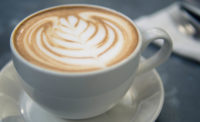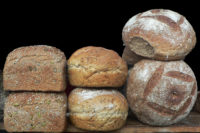TECH FLASH
Starbucks, Panera change up pumpkin latte recipes
In an attempt to win back pumpkin purists this year, the companies are adding real pumpkin and booting artificial flavors.

With no chill in the air and a majority of leaves still on the trees, it might be hard to believe fall is on its way. For foodies, this means the harvest of pumpkin products offered each year by the food and beverage industry is fast approaching.
In recent years, the number of pumpkin-flavored products on the market has surged as consumer demand for these cinnamon and nutmeg delicacies has skyrocketed. Everything from beer, bread, cookies and candy is in on the craze.In an attempt to win back pumpkin purists this year, Starbucks and Panera are tweaking their pumpkin spice latte formulas.
In a blog post published last week by Peter Dukes, director, espresso and brewed coffee Americas for Starbucks, Dukes said the company is removing caramel coloring from the drink and adding bits of real pumpkin. The Starbuck latte, one of the company’s hottest items, came under fire from food blogger Vani Hari, also known as the Food Babe, who last year criticized the coffee company for its use of caramel coloring and lack of transparency when it came to its ingredients.
Panera Bread, which offers a similar latte, says it will launch a new version of its popular beverage this year that is free of artificial colors, flavors, sweeteners and preservatives as defined on the company’s “No No List.” The latte also features real pumpkin in its recipe.
“Our pumpkin spice latte has long been made with real pumpkin and without artificial caramel color—and this year, we’re taking ‘real’ a step further,” says Dan Kish, Panera’s head chef. “We’re offering a ‘Real Pumpkin Latte,’ made entirely without artificial colors, flavors, sweeteners or preservatives, and letting the goodness of real pumpkin, milk and spices do all the work.” Panera announced its “No No List” earlier this year, which contains a list of more than 80 ingredients the company says it plans to eliminate from its food by the end of 2016.
Panera and Starbuck’s commitment to real, simpler ingredients is just the latest move in an ongoing trend sweeping the food and beverage industry. Earlier this month, Kellogg pledged to remove artificial colors and flavors from its products. In June, General Mills said the company plans to have 90 percent of its cereal portfolio free of artificial flavors and colors by the end of 2016. Other companies that have joined the movement in recent months include Nestlé, Kraft, Hershey and the Campbell’s Soup Company.
Looking for a reprint of this article?
From high-res PDFs to custom plaques, order your copy today!





